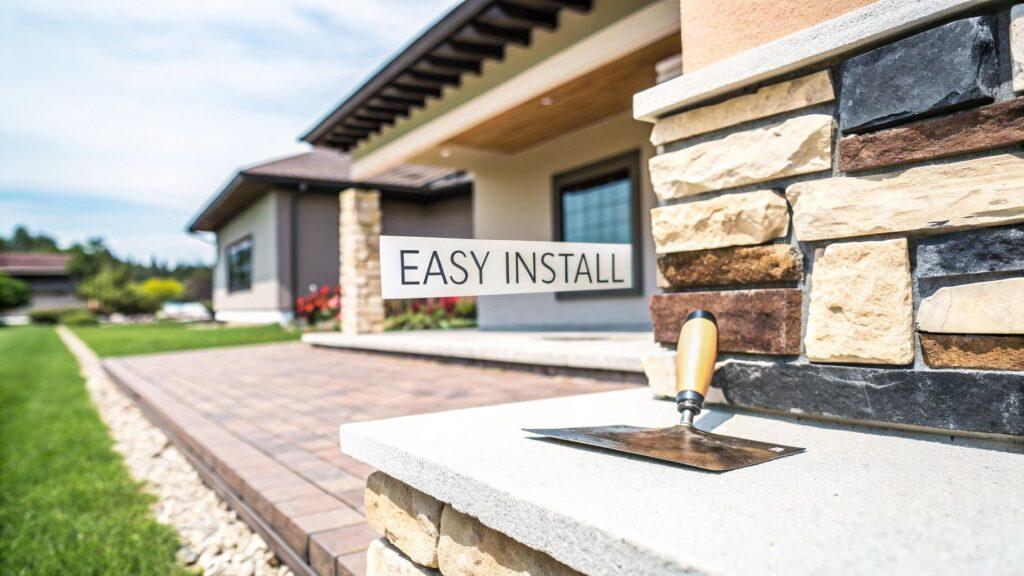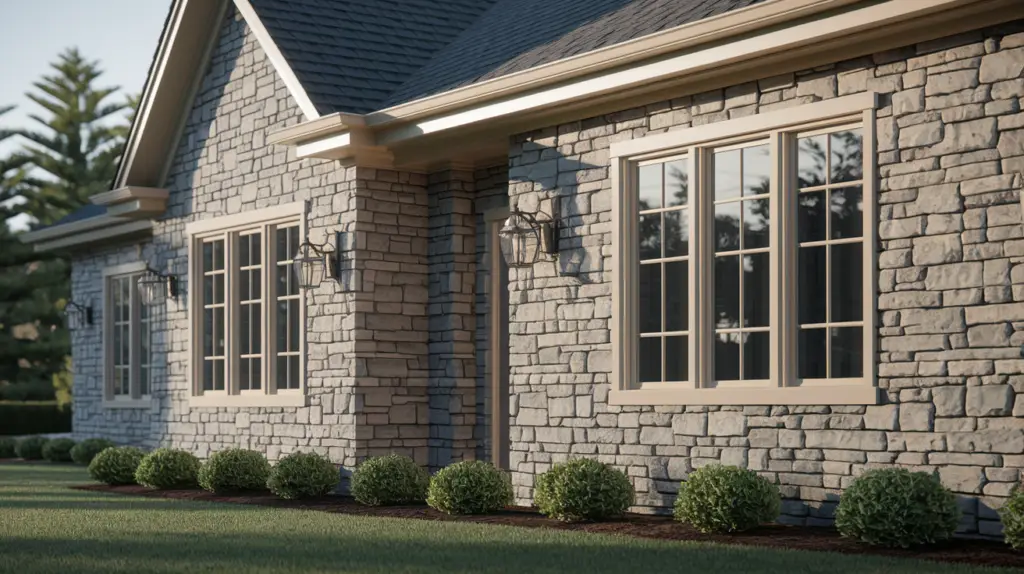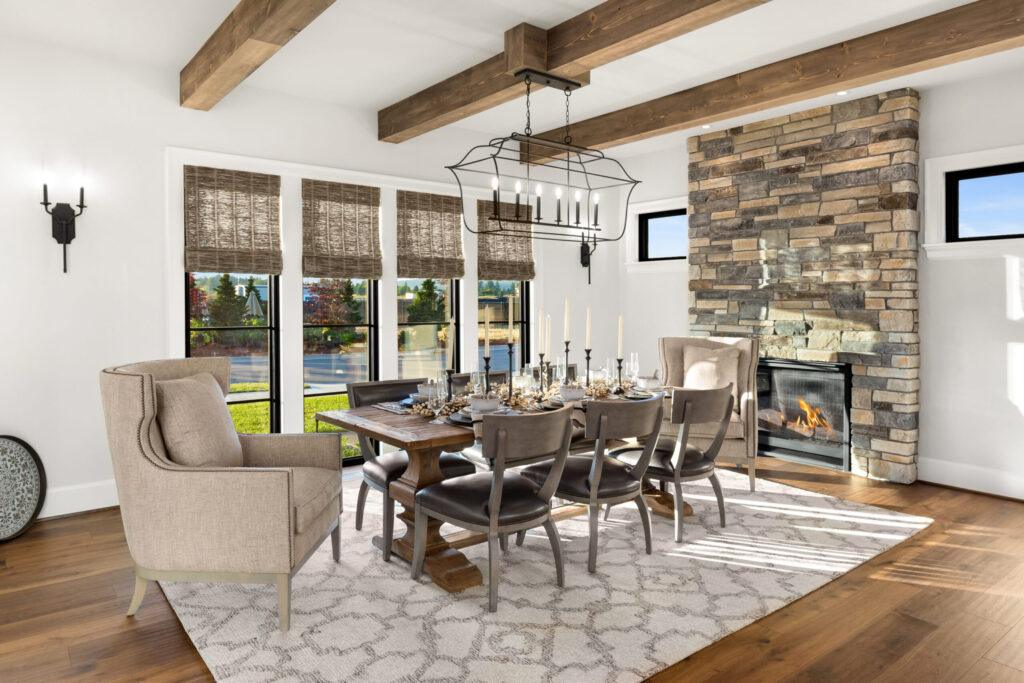Why Easy Install Stone Veneer Is Transforming Australian Homes
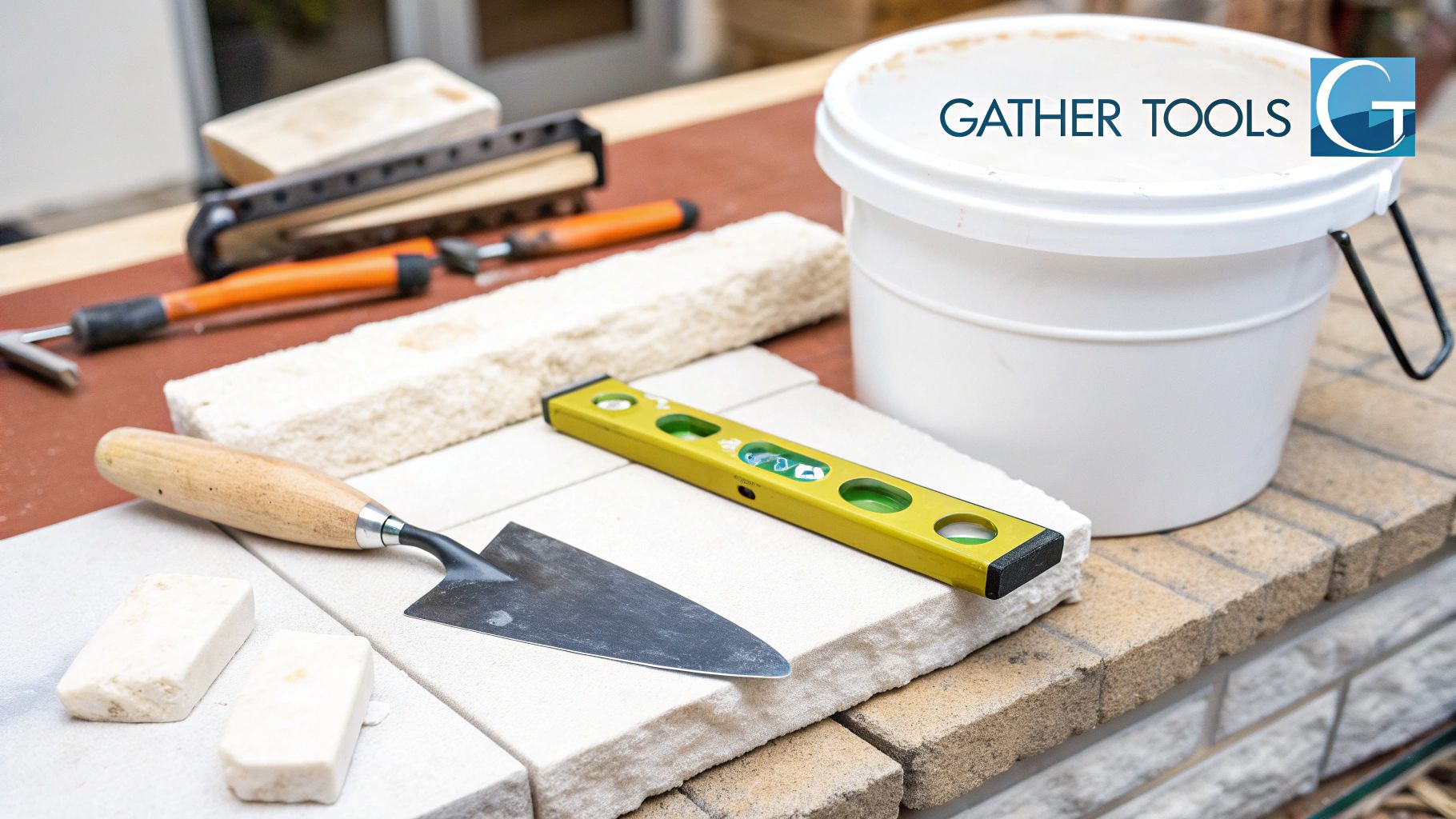
Australian homeowners are constantly looking for ways to boost the value and beauty of their properties. This desire has fueled the rise of easy install stone veneer. This versatile material offers the classic elegance of natural stone, but without the hefty price tag and complicated installation. This trend toward affordable and simpler renovations is reshaping Australian homes. Let’s explore why this material is quickly becoming a go-to choice for renovations and new builds across the country.
The Allure of Effortless Elegance
Easy install stone veneer delivers the high-end look of natural stone at a fraction of the cost. This makes it a compelling choice for budget-conscious homeowners wanting to upgrade their homes' exteriors. The streamlined installation process drastically cuts down on labor time and expenses. This ease of use empowers DIYers to take on projects themselves, further driving the material’s popularity.
Imagine transforming your outdoor entertaining space with a beautiful stone feature wall over a single weekend. Easy install veneer makes this a reality. This accessibility is a key reason for its increasing presence in Australian homes.
Built to Withstand the Aussie Climate
Australia's climate, with its intense sun and temperature fluctuations, necessitates resilient building materials. Easy install stone veneer is designed to endure these challenging conditions. It offers outstanding resistance to UV damage, moisture, and freeze-thaw cycles.
This durability ensures your investment stays protected and looking its best for years, regardless of your location. Whether you're battling Darwin's humidity or Hobart's chilly winters, this resilience is vital for preserving the long-term aesthetic and structural soundness of Australian homes.
Market Growth and Future Projections
Australia currently holds approximately 3.95% of the Asia Pacific manufactured stone veneer market share. This demonstrates the increasing acceptance of these materials within the local construction industry. The Asia Pacific market, including Australia, is poised for substantial growth. It's projected to reach USD 947.227 million by 2033, with a compound annual growth rate (CAGR) of around 5.2%. Find more detailed statistics here. This anticipated growth emphasizes the rising demand for aesthetically pleasing, durable, and cost-effective building materials like easy install stone veneer.
Design Versatility and Structural Advantages
Beyond its practical advantages, easy install stone veneer offers exceptional design flexibility. Available in a diverse range of colours, textures, and profiles, it complements any architectural style, from traditional to modern. Whether you envision a rustic farmhouse or a sleek contemporary design, there's a stone veneer to perfectly match your vision.
Furthermore, its lighter weight demands less structural support than traditional stone. This simplifies the design and construction process, making it particularly advantageous for renovations. This versatility empowers homeowners to create unique and personalized facades, significantly enhancing their property's curb appeal. The combination of beauty, durability, and effortless installation truly makes easy install stone veneer a game-changing material for Australian homes.
Essential Tools & Materials: Your Complete Shopping List
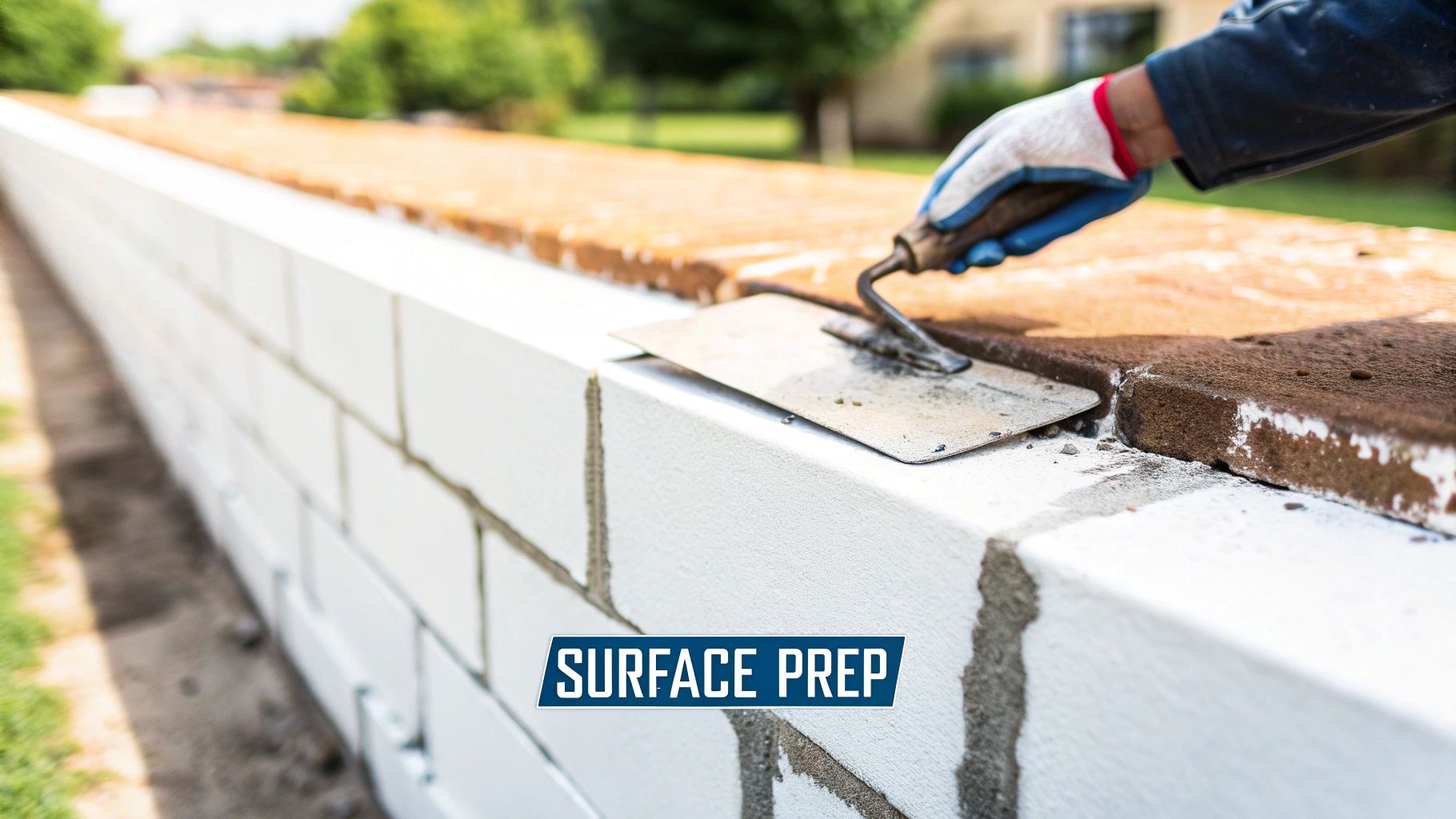
Embarking on a stone veneer project? Proper preparation is the key to a smooth and successful installation. Gathering the right tools and materials upfront ensures professional-looking results, saving you valuable time and money in the long run. This comprehensive guide covers everything you need, from essential adhesives to crucial safety equipment.
Essential Tools For Easy Application
The right tools are your allies in achieving a flawless stone veneer finish. Don't underestimate their importance! Here's a breakdown of what you'll need:
- Notched Trowel: This tool is essential for evenly distributing adhesive across the substrate. A 1/4" x 3/8" notched trowel is typically recommended, but always double-check your product's specific instructions.
- Grout Bag: A grout bag helps you apply grout neatly between the veneer stones, creating a polished and professional look.
- Margin Trowel: Ideal for applying mortar in tight spaces, around corners, and along edges, offering precision and control.
- Level: Accuracy is paramount. A level helps ensure a straight and even installation, avoiding unsightly slopes or unevenness.
- Tape Measure: Precise measurements minimize waste and ensure accurate cuts for your veneer pieces.
- Safety Glasses and Gloves: Safety first! Protect your hands and eyes throughout the process.
- Diamond Blade Saw (Wet Saw): A wet saw provides clean, precise cuts, especially for harder stone veneer types.
- Sponge and Bucket: Keep your workspace tidy and clean up excess mortar and grout with ease.
Must-Have Materials For A Successful Installation
Choosing the right materials, especially those adapted to Australian conditions, guarantees long-lasting, beautiful results.
- Easy Install Stone Veneer: Select a style, colour, and texture that complements your home’s aesthetic.
- Moisture Barrier: Crucial for protecting your substrate from moisture damage, particularly in Australia's diverse climate. Choose a high-quality barrier suited to your region. You might be interested in: How to master…
- Scratch Coat Mortar: This base layer for the veneer promotes strong adhesion to the substrate.
- Adhesive: Opt for a premium adhesive specifically designed for stone veneer and suitable for Australian weather conditions.
- Grout: Select a grout colour that harmonizes with your veneer for a cohesive finish.
- Sealer (Optional): While not always required, a sealer adds an extra layer of protection against the elements, increasing the longevity of your stone veneer. Particularly beneficial in coastal regions.
Choosing The Right Materials For Your Australian Climate
Australia’s diverse climate, from tropical humidity to cooler southern temperatures, requires careful material selection. In coastal areas, a moisture barrier with enhanced salt resistance is vital to combat the corrosive effects of sea air. For areas with fluctuating temperatures, a flexible adhesive prevents cracking and ensures a durable bond. Consult with your local supplier for expert advice on materials optimized for your specific region.
Cost Considerations And Budgeting
Easy install stone veneer offers a cost-effective alternative to natural stone. However, understanding material costs is essential for accurate budgeting. The table below provides estimated costs in Australian Dollars (AUD):
Before you start, take a look at this essential checklist to ensure you have everything you need for a successful installation. This comprehensive list includes recommended options specifically tailored for Australian conditions, helping you achieve a professional and long-lasting finish.
| Item | Purpose | Recommended Type | Estimated Cost (AUD) |
|---|---|---|---|
| Stone Veneer (per m²) | The facing material for your project | Varies based on style and material | $50 – $150 |
| Adhesive | Bonds the veneer to the substrate | Polymer-modified thin-set mortar | $20 – $40 per bag |
| Mortar | Creates the scratch coat for better adhesion | Type S mortar | $15 – $30 per bag |
| Grout | Fills joints between veneer stones | Polymer-modified sanded grout | $10 – $25 per bag |
| Moisture Barrier | Protects the substrate from moisture damage | Water-resistant membrane | $2 – $5 per m² |
These are estimated costs, and actual prices may vary based on location, specific products, and project size. Always confirm with your supplier.
With the right tools and materials at your disposal, transforming your home with the enduring beauty of easy install stone veneer becomes a manageable and rewarding project. This investment adds value and significantly elevates your property’s curb appeal.
Weekend Warrior's Guide to Easy Install Stone Veneer
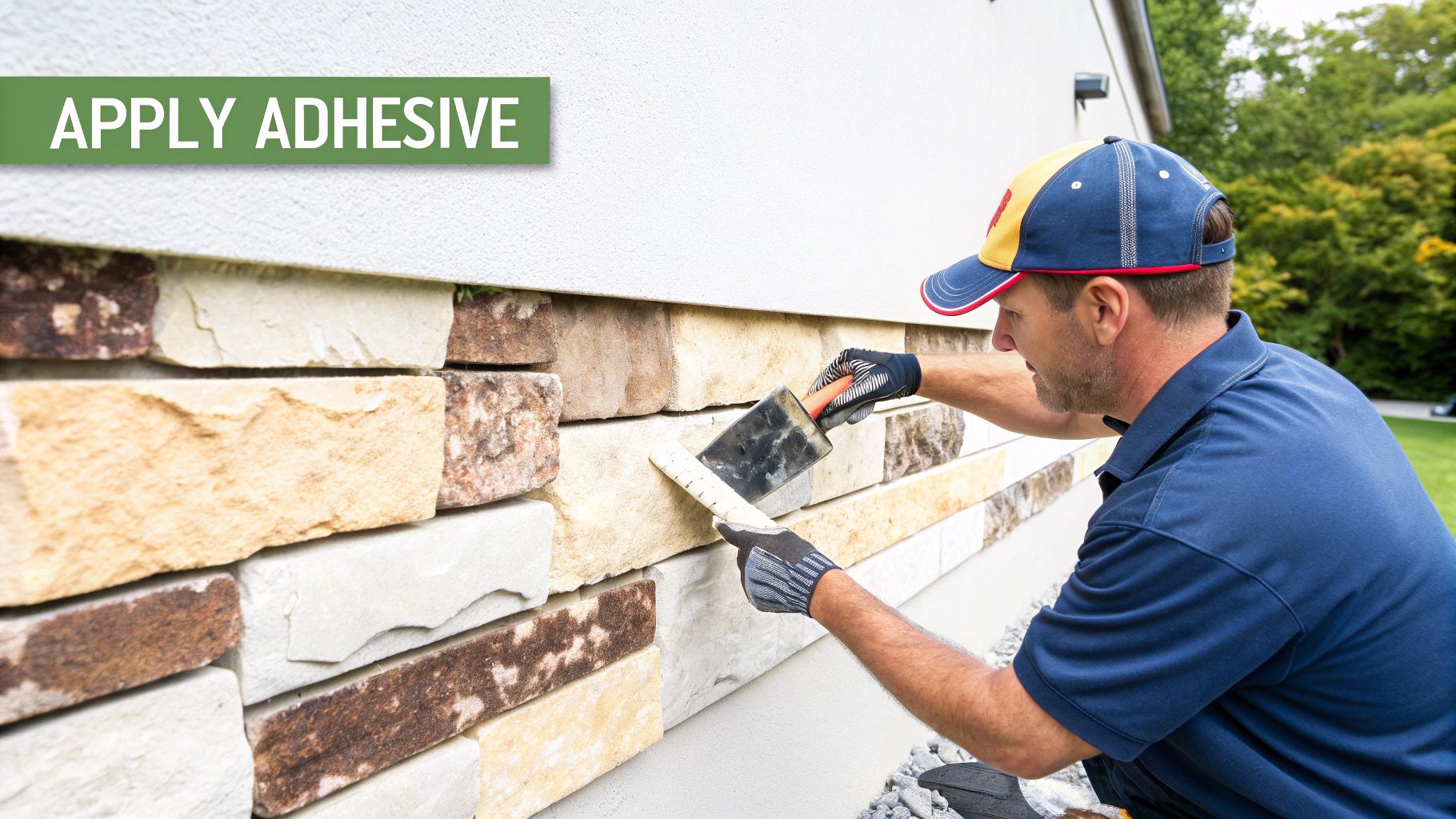
Transforming your home with easy install stone veneer is easier than you think. This guide simplifies the installation process into manageable steps, empowering even beginner DIYers to achieve professional results. From preparation to finishing touches, we'll cover everything you need for a successful project.
Preparing the Substrate: The Foundation of Success
A strong foundation is essential for any successful stone veneer project. This starts with proper substrate preparation. Ensure the surface is clean, stable, and free of debris. Depending on your existing wall material (brick, concrete, timber, etc.), you may need to apply a scratch coat of mortar. This creates a textured surface for optimal veneer adhesion.
For timber-framed homes, installing a moisture barrier is crucial. This safeguards the underlying structure from water damage, especially important in Australia's diverse climate. See our guide on How to master…. This often-overlooked layer is vital for preventing long-term problems and enhancing the veneer's durability.
Mastering the Art of Measurement and Cutting
Precise measurements are key to minimizing waste and ensuring a seamless fit. Carefully measure the area you're covering. Using a diamond blade wet saw, cut the veneer pieces to size. For intricate cuts around windows or doors, a grinder with a diamond blade offers precision.
Practice cuts on spare veneer pieces will build your confidence with the saw and ensure clean, accurate results. This is particularly important for complex designs or specific patterns. Precise cutting delivers a professional and polished final look.
Laying the Stone: Techniques for a Seamless Finish
With the surface prepared and pieces cut, the exciting part begins: laying the stone. Starting from the bottom, apply adhesive to each veneer piece's back using a notched trowel. Firmly press each piece onto the substrate, ensuring a tight bond. Maintain consistent spacing for a uniform appearance.
For corners, specialized corner pieces create a seamless, professional look. These simplify installation and provide a clean finish, avoiding difficult miter cuts. This results in a natural, integrated appearance.
Grouting and Sealing: The Finishing Touches
After the adhesive cures, apply grout between the stones. A grout bag allows for precise application, filling the joints completely. Smooth the grout with a pointing tool for a refined finish.
Once dry, consider applying a sealer. While optional, a sealer offers extra protection against moisture and staining, especially in areas exposed to harsh weather. This is particularly important for coastal Australian homes facing salt spray.
The increasing popularity of easy install stone veneer is a global trend. The worldwide market, including Australia within the Asia-Pacific region, was valued at USD 1.5 billion in 2023. Projections show it nearly doubling to USD 2.8 billion by 2032, with a CAGR of 7.2%. This growth reflects the rising demand for easy-install DIY home improvements and residential construction. Learn more about this growing market.
Troubleshooting Common Issues: A Proactive Approach
While designed for simplicity, some challenges can arise. Uneven surfaces might require adjusting adhesive thickness for a level finish. Temperature fluctuations, especially in Australia, can cause expansion and contraction. Using flexible adhesives and sealants mitigates these issues.
For further information, check out: How to master exterior stone veneer installation. Understanding and addressing these potential issues ensures a successful, long-lasting installation, enhancing your home's beauty and value. Careful planning and these detailed steps will make your weekend project a stunning success.
Selecting the Perfect Stone Veneer for Your Vision
Choosing the right stone veneer can feel like a daunting task with so many options available in Australia. But making the right choice is paramount to achieving your design dreams. This guide will help you navigate the selection process, exploring popular veneer types, from rugged sandstone perfect for coastal homes to sleek, modern styles ideal for urban living.
Balancing Aesthetics and Durability in the Australian Climate
Choosing a stone veneer involves balancing aesthetic appeal with resilience against Australia's challenging climate. Think about how the color will hold up under intense UV rays, how well it resists moisture in tropical areas, and how it handles freeze-thaw cycles in colder regions. For example, a darker veneer might absorb more heat in sunny Queensland, while a porous stone could crack in Tasmania's winters.
Your property’s architectural style also influences your veneer choice. A classic Queenslander might benefit from traditional sandstone, while a contemporary Melbourne townhouse could suit a sleek, linear style. Learn more about the various types of stone veneer. The perfect veneer enhances your property's character and ensures lasting durability.
To help you compare various stone veneer types available in Australia and their suitability, we've created the following table:
Stone Veneer Types Comparison
| Veneer Type | Appearance | Durability | Cost Range | Best Applications | Installation Difficulty |
|---|---|---|---|---|---|
| Sandstone | Rugged, natural | High, good UV resistance | Moderate to High | Coastal homes, traditional architecture | Moderate |
| Limestone | Smooth, uniform | Moderate, susceptible to acidic rain | Moderate | Contemporary designs, interior applications | Easy to Moderate |
| Quartzite | Varied, can mimic marble | High, scratch and stain-resistant | High | Modern and traditional homes, countertops | Moderate to Difficult |
| Stacked Stone | Layered, textured | High, depending on the stone type | Moderate to High | Accent walls, fireplaces | Moderate |
| Manufactured Stone | Versatile, mimics natural stone | High, weather-resistant | Low to Moderate | Various applications, budget-friendly option | Easy |
This table highlights the diverse characteristics of different stone veneers, making it easier to select the one best suited to your specific project and budget. Remember to consider your local climate and the overall aesthetic you wish to achieve.
Dry-Stack vs. Mortared: Installation Considerations
Your chosen installation method impacts your veneer choice. Dry-stack installations, where stones are fitted without mortar, create a natural, rustic appearance. Mortared installations provide more design flexibility and are often more weather-resistant. The infographic below visually represents the key differences between these styles.
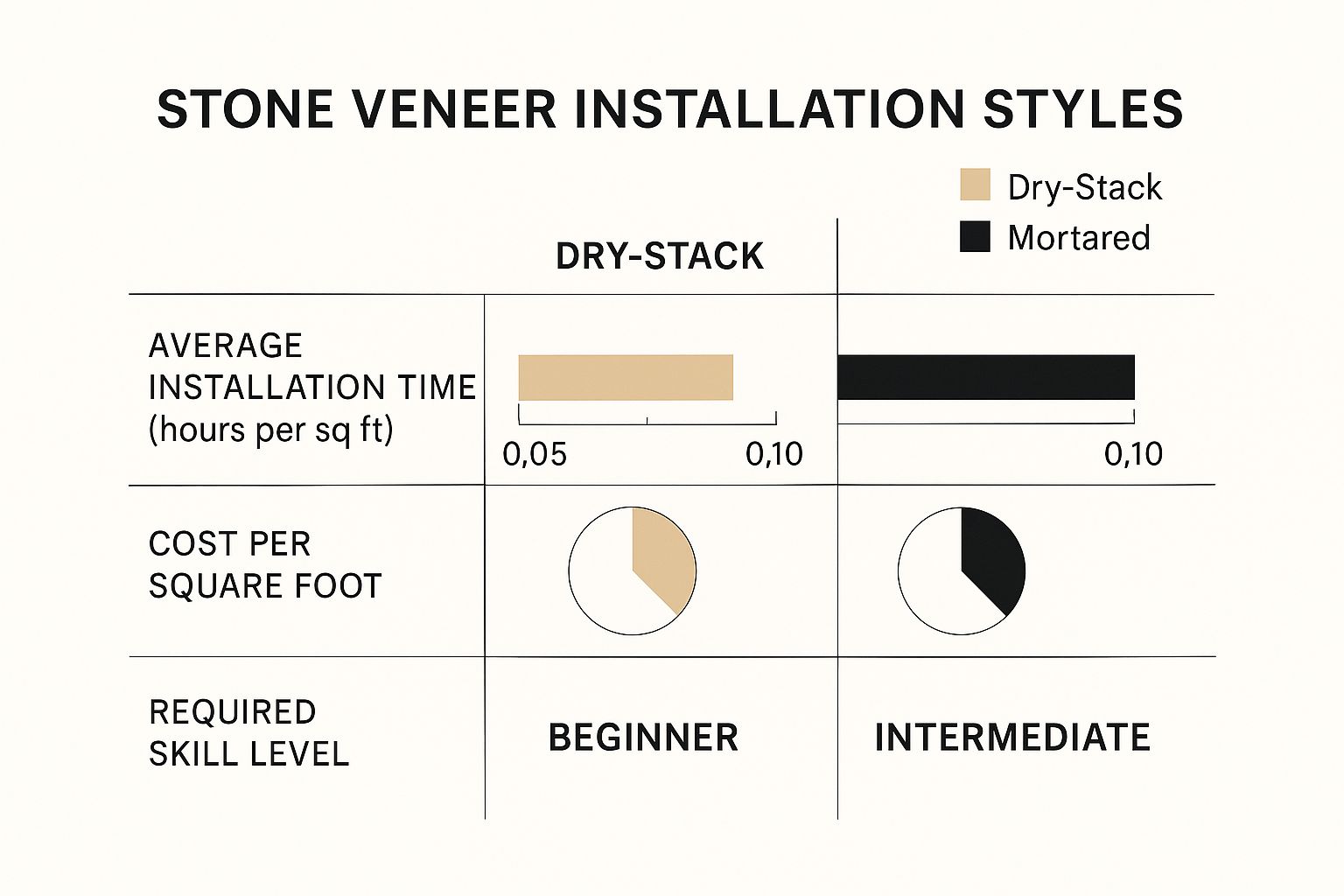
Dry-stacking takes more time and can be more expensive than mortared installations due to the precise fitting required. However, it’s a great option for DIY enthusiasts. For those wanting more guidance, this Folding Door Installation Instructions Diy Guide offers practical installation advice. The best method depends on your budget, skill level, and desired look.
The Growing Popularity of Easy Install Stone Veneer
Demand for easy install stone veneer in Australia is on the rise, fueled by increased construction and renovation. Residential construction significantly influences this demand, with a growing number of homeowners choosing veneer for façade cladding. Globally, the residential sector represents over 60% of the market, a trend reflected in Australia where curb appeal and durability are highly valued. Australian builders are increasingly opting for quartz sand-type stone veneers for their durability, natural appearance, and cost-effectiveness.
Advancements in technology produce lighter, more versatile veneer sheets, simplifying and reducing the cost of installation. Government incentives for sustainable building practices further encourage the use of stone veneer. While North America and Europe lead in total market size, the Asia-Pacific region, including Australia, shows the fastest growth thanks to urban expansion and building renovations. This trend is projected to continue through 2025 and beyond. Explore this topic further. This increasing demand is driven by the desire for low-maintenance, beautiful, and cost-effective building materials.
By considering these factors, you can choose the perfect easy install stone veneer to enhance your Australian home’s beauty and value for years to come.
Troubleshooting Your Way to Flawless Stone Veneer
Even with easy-install stone veneer, occasional challenges can arise. This section addresses the most common hurdles you might encounter, drawing from the experiences of both professionals and DIYers. We'll empower you with the know-how to achieve truly professional results.
Conquering Uneven Surfaces
Perfectly straight lines can be elusive when applying stone veneer to uneven surfaces. The secret? Adjusting your adhesive thickness. Think of it as shimming a wobbly table. Thicker adhesive in low spots, thinner in high spots. This creates a level plane for your veneer. Regularly checking with a level ensures consistent accuracy and a flawless finish.
Managing Expansion and Contraction: Australia's Temperature Extremes
Australia's dramatic temperature fluctuations cause materials to expand and contract, potentially cracking your stone veneer. The key is using a high-quality, flexible adhesive. This allows for movement without jeopardizing the bond. For larger areas, consider expansion joints to further accommodate these shifts and maintain structural integrity.
Preventing Moisture Problems in Coastal Environments
Coastal Australian homes face the added challenge of salt exposure. Moisture and salt can damage stone veneer if not properly addressed. A robust moisture barrier, especially one designed for salt resistance, is crucial. Sealing your veneer with a high-quality sealant adds extra protection against the corrosive effects of the sea air, preserving your facade's beauty.
Tricky Installations Around Windows and Doors
Installing veneer around windows and doors demands precision. Accurate measurements and careful cutting are paramount. For intricate shapes, create templates from cardboard or thick paper. This allows you to test the fit before cutting the veneer, minimizing waste and ensuring a perfect match.
Addressing Adhesion Failures
Sometimes, veneer can separate from the substrate. This often stems from inadequate surface preparation or incorrect adhesive. A meticulously clean surface, free of dust and debris, is essential for proper adhesion. Use the manufacturer’s recommended adhesive and ensure it's correctly mixed. Re-installation may be necessary if adhesion problems persist.
Correcting Colour Inconsistencies
Slight colour variations between veneer batches can occur due to natural material differences. To avoid noticeable discrepancies, blend stones from several boxes during installation. This disperses variations, creating a natural, blended look and a uniform finish. By proactively addressing these common challenges, you’ll achieve a stunning, long-lasting stone veneer finish that elevates the beauty and value of your Australian home.
Protecting Your Investment: Essential Maintenance Secrets
Your newly installed easy install stone veneer facade dramatically elevates your home's aesthetic appeal. But preserving its captivating charm demands consistent and proper care. This guide tackles the unique hurdles Australian homeowners face, from intense UV radiation to corrosive coastal salt spray, equipping you with the essential knowledge to safeguard your investment for decades.
Cleaning Techniques for Delicate Surfaces
Maintaining the pristine look of your easy install stone veneer requires regular cleaning. However, using harsh chemicals can compromise the veneer’s delicate surface. Instead, choose a gentle cleaning solution of mild dish soap and water. Apply this mixture with a soft-bristled brush, scrubbing lightly to lift away dirt and grime. Rinse thoroughly with clean water afterwards. For those stubborn, ingrained stains, a pressure washer on a low setting can be highly effective. Just remember to maintain a distance of at least 50cm between the nozzle and the veneer surface to prevent any damage. This measured approach will ensure your veneer remains in peak condition.
Sealing: Shielding Your Veneer from the Elements
Sealing your easy install stone veneer provides a vital extra layer of defense against the extremes of the Australian climate. Sealants actively block moisture penetration, which can lead to unsightly cracking and discolouration, particularly during the freeze-thaw cycles prevalent in certain regions. Furthermore, sealants inhibit the growth of mould and mildew, a common issue in humid environments. Even with the convenience of easy install stone veneer, unforeseen project complications can still arise. Stay on top of your project by referencing resources like this guide on managing project scope creep. Selecting the right sealant is paramount. Penetrating sealers are excellent for porous stones like sandstone, while surface sealers are better suited for denser veneers such as quartzite. Always adhere to the manufacturer’s instructions for application and reapplication frequency to achieve optimal protection.
Addressing Mould and Mildew in Humid Regions
High humidity levels in various parts of Australia can promote the growth of mould and mildew on stone veneer. Regular cleaning with a mild bleach solution (one part bleach to ten parts water) effectively combats this issue. Maintaining adequate ventilation around the veneer also discourages moisture buildup, a key factor in mould and mildew development. This proactive maintenance not only preserves the veneer’s aesthetic appeal but also protects its structural integrity.
Regular Inspections: Preventing Minor Issues From Becoming Major Problems
A simple quarterly inspection routine can prevent minor issues from developing into costly repairs. Check for cracks, loose stones, or signs of sealant deterioration. Addressing these small problems promptly is significantly more economical than undertaking major restoration work later. This proactive approach will save you both time and money in the long run.
Protecting Veneer During Extreme Weather: From Cyclones to Bushfires
Australia's extreme weather, from powerful cyclones to devastating bushfires, presents a real threat to your stone veneer. Before a cyclone strikes, secure any loose objects around the veneer that high winds could turn into damaging projectiles. In bushfire-prone areas, clear vegetation away from the facade and consider applying a fire-retardant sealant for increased protection. These preventative measures can significantly reduce the risk of damage during extreme weather events.
Professional Repairs and Refreshing Tired Surfaces
Even the most resilient easy install stone veneer may require professional attention over time. Professional repairs can address significant damage or persistent discolouration. Techniques like repointing (replacing deteriorated mortar) or specialized stain removal can restore your veneer's original beauty. These interventions revitalize tired surfaces and enhance your home's curb appeal, protecting your investment and ensuring its beauty endures for generations. Transform your home with the timeless elegance and enduring quality of Flomary's easy install stone veneer. Explore our comprehensive collection of flexible stone tiles and manufactured stone veneer panels, ideal for any project, at https://flomary.tr. Our expert team offers personalized consultations and free quotations to help you realize your design vision.

